Pricing Guides & Dictionary of Makers Marks for Antiques & Collectibles

Exploring the world of
COLLECTIBLE JAPANESE SATSUMA PORCELAIN
Join the most updated and complete collectibles research online - Learn more...
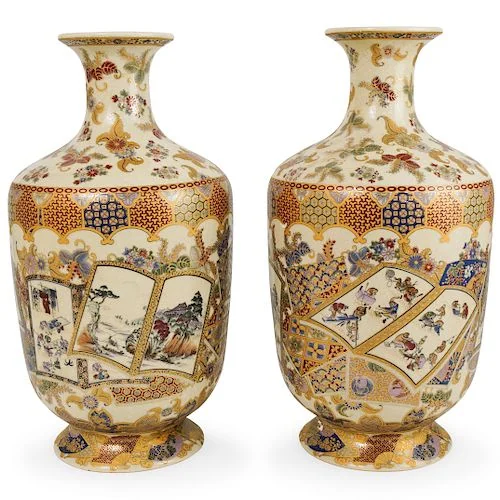 If you are a lover of Japanese pottery, then you might have already heard about Satsuma Porcelain. This fine art has been captivating collectors around the world for centuries. Satsuma porcelain originated from the southern Japanese region of Kyushu, and it is known for its intricacy, beauty, and delicate nature. In this article, we will take a deep dive into the world of collectible Japanese Satsuma Porcelain, its history, characteristics, and what to look for when purchasing a piece.
If you are a lover of Japanese pottery, then you might have already heard about Satsuma Porcelain. This fine art has been captivating collectors around the world for centuries. Satsuma porcelain originated from the southern Japanese region of Kyushu, and it is known for its intricacy, beauty, and delicate nature. In this article, we will take a deep dive into the world of collectible Japanese Satsuma Porcelain, its history, characteristics, and what to look for when purchasing a piece.
The History of Satsuma Porcelain
Satsuma Porcelain has a rich history dating back to the 16th century when it was first created by Korean potters who had been brought to Japan by a feudal lord named Shimazu. The Shimazu family became patrons of the art form, and it flourished under their patronage.
Satsuma Porcelain first became popular in the West during the Meiji period (1868-1912), when Japan opened its doors to international trade. The pottery was showcased at world fairs and became a popular export item. The style was heavily influenced by the Chinese and Korean styles, but over time it developed a distinctive Japanese aesthetic.
The Characteristics of Satsuma Porcelain
Satsuma Porcelain is known for its creamy off-white glaze, which is applied to a thin layer of earthenware. It is then decorated with colorful enamel paints, gold leaf, and finely detailed designs. The style often features scenes from Japanese history or culture, as well as depictions of flora and fauna. Some Satsuma pieces also feature intricate raised or carved designs, adding to their beauty.
One of the most notable features of Satsuma Porcelain is its delicate nature. The pottery is thin and lightweight, making it vulnerable to damage. This is why Satsuma pieces are often housed in protective cases or displayed in cabinets.
What to Look for When Purchasing Satsuma Porcelain
If you are interested in collecting Satsuma Porcelain, there are a few things to keep in mind when purchasing a piece. Here are some tips to help you make an informed decision:
- Authenticity: Look for pieces that are signed by the artist or have a maker's mark. Be wary of mass-produced pieces that are not signed or marked.
- Condition: Look for pieces that are in good condition with no chips, cracks, or repairs. Satsuma porcelain is delicate, so it is common to find some wear and tear, but make sure it does not affect the piece's overall beauty.
- Design: Look for pieces with intricate designs and fine details. Satsuma porcelain is known for its intricate designs, so make sure the piece you choose has intricate designs that catch your eye.
- Provenance: Look for pieces with a documented history of ownership. Pieces with a known history and ownership are often more valuable than those without.
Collecting Satsuma Porcelain
Collecting Satsuma Porcelain can be a rewarding experience for anyone interested in Japanese art and pottery. There are many different types of Satsuma pieces available, from vases and teapots to plates and bowls. Prices can range from a few hundred dollars to tens of thousands of dollars, depending on the age, condition, and rarity of the piece.
When starting a collection, it's essential to have a budget in mind and to purchase pieces that you genuinely enjoy. Don't be afraid to ask questions and seek out advice from experts in the field.
Satsuma Porcelain is not only a beautiful addition to your home decor, but it is also a significant investment. As with any investment, it's important to take care of your Satsuma pieces properly. Here are some tips for keeping your Satsuma porcelain in good condition:
- Handle with care: Satsuma porcelain is delicate and should be handled with care. Always hold the piece with both hands and avoid touching the delicate areas of the design.
- Display in a safe place: Satsuma porcelain should be displayed in a safe place away from direct sunlight and heat sources. It's also a good idea to display the piece in a protective case or cabinet.
- Clean with care: Use a soft, dry cloth to gently clean your Satsuma porcelain. Avoid using water or harsh cleaning products, as they can damage the delicate design and glaze.
Conclusion
Satsuma porcelain is a beautiful and delicate art form that has captured the hearts of collectors around the world. Its rich history, intricate designs, and delicate nature make it a valuable addition to any collection. When purchasing Satsuma porcelain, it's essential to keep in mind the authenticity, condition, design, and provenance of the piece. With proper care and handling, your Satsuma porcelain collection will last for generations to come.
Unlock the true value of your collection with our comprehensive research guides from identifying makers' marks to appraising all kinds of antiques and collectibles, including items featured in this article.
Our up-to-date information will give you an accurate understanding of your items' worth. Don't miss out on this valuable resource - visit our research tools today!
In addition to some examples shown below on this page, you can also search our price guide for your own treasures.
Examples of related items from our Price Guides
-
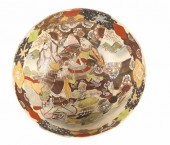 C. 1868-1919 SATSUMA GOLD GILT BOWL W/ W
[more like this]
C. 1868-1919 SATSUMA GOLD GILT BOWL W/ W
[more like this]
-
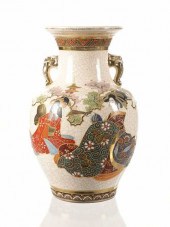 CA. 1920- JAPANESE SATSUMA BALUSTER VASE
[more like this]
CA. 1920- JAPANESE SATSUMA BALUSTER VASE
[more like this]
-
 JAPANESE PORCELAINS INCLUDING SATSUMA. I
[more like this]
JAPANESE PORCELAINS INCLUDING SATSUMA. I
[more like this]
-
 ASSORTED GROUPING OF SATSUMA, CLOISONNE
[more like this]
ASSORTED GROUPING OF SATSUMA, CLOISONNE
[more like this]
-
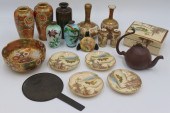 JAPANESE SATSUMA, ENAMEL, AND BRONZE CAB
[more like this]
JAPANESE SATSUMA, ENAMEL, AND BRONZE CAB
[more like this]
-
 JAPANESE SATSUMA EARTHENWARE VASE, SIGNE
[more like this]
JAPANESE SATSUMA EARTHENWARE VASE, SIGNE
[more like this]
-
 THREE SATSUMA PIECES TO INCLUDE A SATSUM
[more like this]
THREE SATSUMA PIECES TO INCLUDE A SATSUM
[more like this]
-
 Nine pieces Satsuma: bowl, interior with
[more like this]
Nine pieces Satsuma: bowl, interior with
[more like this]
-
 Fourteen Japanese and Chinese Porcelain
[more like this]
Fourteen Japanese and Chinese Porcelain
[more like this]
-
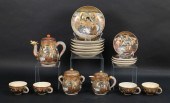 SATSUMA HODODA PORCELAIN TEA SET17 piece
[more like this]
SATSUMA HODODA PORCELAIN TEA SET17 piece
[more like this]
-
 Group of three Japanese Satsuma collecti
[more like this]
Group of three Japanese Satsuma collecti
[more like this]
-
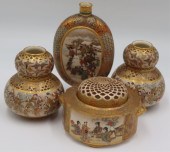 COLLECTION OF JAPANESE SATSUMA PORCELAIN
[more like this]
COLLECTION OF JAPANESE SATSUMA PORCELAIN
[more like this]
There are many more auction results available to our members...





